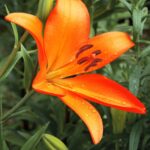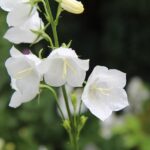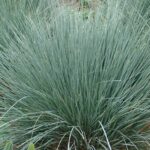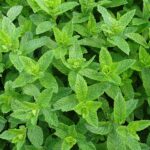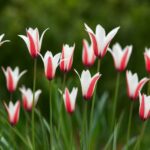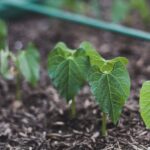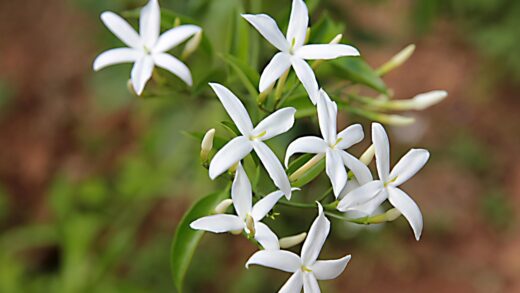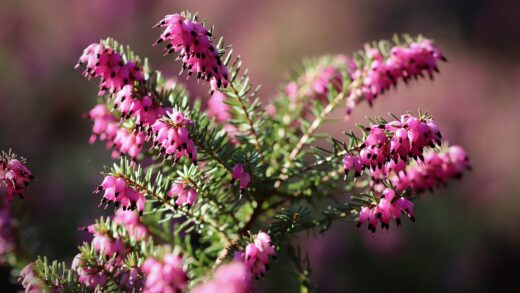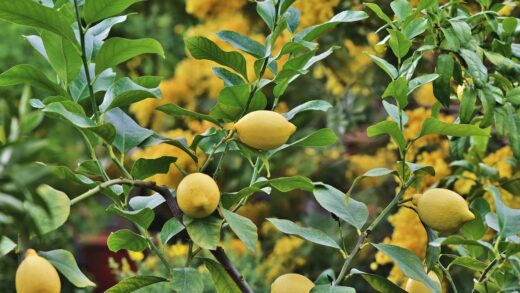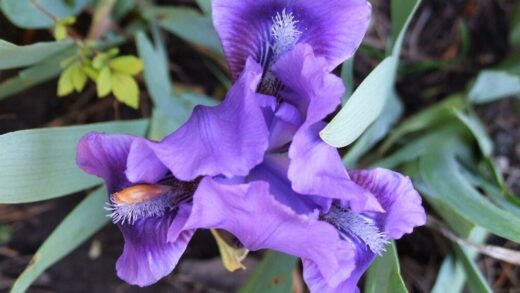Caring for the Asian persimmon tree, a species known for its vibrant autumn foliage and delicious, honey-like fruit, is a rewarding endeavor for any dedicated gardener. Successful cultivation hinges on a comprehensive understanding of its specific needs throughout the year, from initial planting to maturity. This involves a balanced approach to soil management, watering, pruning, and nutritional support to ensure the tree not only survives but thrives, producing a bountiful harvest. Providing the right conditions from the outset will prevent many common issues and promote a long, productive life for this exceptional fruit tree. A healthy persimmon tree is not only a source of fruit but also a stunning ornamental addition to any landscape.
The foundation of proper persimmon care lies in selecting an appropriate planting site and ensuring the soil conditions are optimal. These trees demand a location that receives full sun, meaning at least six to eight hours of direct sunlight per day, which is crucial for fruit development and sugar accumulation. The soil should be well-draining, as persimmon trees are highly susceptible to root rot in waterlogged conditions. A sandy loam or loamy soil with a slightly acidic to neutral pH, typically between 6.0 and 7.0, provides the ideal growing medium for robust root establishment and nutrient uptake.
Properly managing the soil environment is a continuous process that extends beyond the initial planting. Amending the soil with organic matter, such as well-rotted compost or manure, can significantly improve its structure, fertility, and water-retention capabilities. This is particularly beneficial in heavy clay or overly sandy soils. Applying a layer of organic mulch, like wood chips or straw, around the base of the tree helps conserve soil moisture, suppress weed growth, and regulate soil temperature, protecting the root system from extreme heat and cold. This simple practice contributes immensely to the overall health and vigor of the tree.
Beyond the soil, consistent monitoring and timely intervention are key aspects of long-term care. This includes regularly inspecting the tree for any signs of pests or diseases, allowing for early treatment before a problem becomes severe. It also involves observing the tree’s growth patterns, leaf color, and fruit development, as these are direct indicators of its health. Any changes, such as yellowing leaves or stunted growth, can signal underlying issues with watering, nutrition, or disease that need to be addressed promptly. Proactive care ensures the tree remains resilient and productive for many years.
Soil and site selection requirements
Selecting the perfect site is arguably the most critical step in establishing a healthy Asian persimmon tree. These trees flourish in full sun, which is non-negotiable for achieving high-quality fruit production and proper ripening. A south-facing or west-facing location that is shielded from strong, prevailing winds is ideal, as wind can damage branches and cause premature fruit drop. It is also important to consider the tree’s mature size, ensuring it has adequate space to grow without being crowded by other trees, buildings, or overhead power lines, which could limit light exposure and air circulation.
More articles on this topic
The soil composition itself plays a vital role in the tree’s long-term health. Asian persimmons demonstrate a surprising tolerance for a range of soil types, but they perform best in deep, well-drained loams. Poorly drained, heavy clay soils can lead to root asphyxiation and increase the risk of fungal root diseases, such as Phytophthora root rot. Before planting, it is highly advisable to conduct a simple percolation test by digging a hole and observing how quickly water drains away. If water stands for more than a few hours, the site’s drainage must be improved through soil amendments or the installation of a drainage system.
Soil pH is another crucial factor that directly influences nutrient availability for the persimmon tree. The optimal pH range is between 6.0 and 7.0, which is slightly acidic to neutral. Outside of this range, essential nutrients like iron, manganese, and zinc can become locked up in the soil and unavailable to the plant, even if they are present in sufficient quantities. A soil test from a reputable laboratory can provide an accurate pH reading and offer specific recommendations for amendments, such as applying lime to raise the pH or sulfur to lower it, ensuring the tree can access the full spectrum of nutrients it needs.
Finally, preparing the soil in the chosen location before planting is essential for giving the tree a strong start. This involves clearing the area of all weeds and grass, which would otherwise compete for water and nutrients. The soil should be loosened to a depth of at least 30-40 centimeters in a wide area around the planting spot, not just in the hole itself. Incorporating a generous amount of organic compost or aged manure into the loosened soil will enhance its fertility and structure, creating a welcoming environment for the young tree’s roots to expand and establish themselves quickly.
Pruning for health and productivity
Pruning is a fundamental practice in the care of Asian persimmon trees, essential for establishing a strong structure, promoting air circulation, and maximizing fruit yield. The primary goal during the tree’s early years is to develop a sturdy framework capable of supporting heavy fruit loads in the future. This is typically achieved by establishing a modified central leader system, where a dominant central trunk is maintained with several well-spaced scaffold branches radiating outwards. This structure ensures that sunlight can penetrate the entire canopy, which is vital for fruit ripening and color development.
More articles on this topic
For young, newly planted trees, the initial pruning should focus on selecting three to five main scaffold branches that are evenly distributed around the trunk, both vertically and radially. These branches should have wide crotch angles, ideally between 45 and 60 degrees, as narrow angles create weak points that are prone to splitting under the weight of fruit or ice. Any competing leaders, crossing branches, or branches growing towards the center of the tree should be removed. This formative pruning sets the stage for a well-balanced and open tree structure.
As the tree matures, the focus of pruning shifts from structural development to maintenance. The main objectives of maintenance pruning are to remove dead, diseased, or damaged wood, thin out excessive growth to improve light penetration and air movement, and manage the tree’s size. Thinning cuts, which involve removing an entire branch back to its point of origin, are generally preferred over heading cuts, which shorten a branch and can encourage a dense flush of weak growth. Proper thinning helps reduce the incidence of fungal diseases that thrive in damp, stagnant conditions.
The timing of pruning is critical to avoid negatively impacting the tree’s health and fruit production. The best time to prune Asian persimmons is during the late dormant season, typically in late winter or early spring, just before new growth begins. Pruning during this period minimizes stress on the tree and reduces the risk of disease infection at the pruning sites. It is important to remember that persimmons fruit on new growth, so excessive removal of the previous year’s wood can lead to a significant reduction in the current season’s harvest.
Watering and irrigation strategies
Proper watering is crucial for the health of Asian persimmon trees, especially during their establishment phase and key growth periods. A newly planted tree has a limited root system and requires consistent moisture to survive and grow. For the first one or two years after planting, the tree should be watered deeply once or twice a week during the growing season, depending on rainfall and soil type. The goal is to keep the soil consistently moist but not waterlogged, ensuring the roots have access to the water they need to expand into the surrounding soil profile.
For mature, established trees, irrigation needs change and are most critical during the periods of flowering, fruit set, and fruit development. Inconsistent watering during these stages can lead to premature fruit drop, smaller fruit size, and even fruit cracking. While mature persimmons are relatively drought-tolerant, prolonged dry spells will negatively impact the quality and quantity of the harvest. A deep watering every few weeks during dry summer months is generally sufficient to maintain tree vigor and support a healthy crop. Using a soaker hose or drip irrigation system is highly effective as it delivers water directly to the root zone and minimizes evaporation.
It is equally important to recognize the signs of both under-watering and over-watering. An under-watered tree may exhibit symptoms such as wilting or drooping leaves, yellowing foliage, and premature leaf or fruit drop. Conversely, an over-watered tree, often suffering from a lack of oxygen in the root zone, can also show yellowing leaves (chlorosis), stunted growth, and in severe cases, root rot. Monitoring the soil moisture is the most reliable way to determine when to water; the soil should be allowed to dry slightly to a depth of a few centimeters before the next irrigation is applied.
The type of soil plays a significant role in determining the frequency and amount of watering required. Sandy soils drain quickly and will need more frequent irrigation than heavy clay soils, which retain moisture for much longer periods. Applying a thick layer of organic mulch around the base of the tree is an excellent strategy for moderating soil moisture levels. Mulch helps to reduce water evaporation from the soil surface, keeps the root zone cooler in summer, and suppresses competitive weeds, making it a cornerstone of an efficient irrigation strategy for persimmon trees.
Fertilization and nutrient management
Effective nutrient management is essential for sustaining the long-term health and productivity of Asian persimmon trees. While they are not considered heavy feeders, a balanced supply of essential nutrients is required for vigorous growth, strong flowering, and the development of high-quality fruit. The most important nutrients for persimmons are nitrogen (N), phosphorus (P), and potassium (K), along with various micronutrients. Nitrogen is particularly crucial for vegetative growth, while phosphorus supports root development and energy transfer, and potassium is vital for fruit quality and overall tree hardiness.
Before applying any fertilizer, it is highly recommended to conduct a soil test to determine the existing nutrient levels and soil pH. This scientific approach prevents the guesswork that can lead to over-fertilization, which can be more harmful than under-fertilization. Excessive nitrogen, for example, can stimulate vigorous, weak vegetative growth at the expense of fruit production and can also cause a significant amount of fruit to drop prematurely. A soil test provides a clear roadmap, indicating precisely which nutrients are lacking and in what quantities they should be applied.
A balanced fertilizer, such as a 10-10-10 or a formulation specifically designed for fruit trees, is generally a good choice for persimmons. For young trees, a light application in the spring after new growth emerges is sufficient to encourage establishment. For mature, fruit-bearing trees, the fertilizer should be applied in late winter or early spring, just before the start of the growing season. The fertilizer should be spread evenly on the ground under the tree’s canopy, extending out to the dripline, and then lightly incorporated into the soil and watered in to ensure it reaches the root zone.
In addition to synthetic fertilizers, organic amendments play a crucial role in a holistic nutrient management plan. Incorporating well-rotted compost or aged manure into the soil provides a slow release of essential nutrients and improves soil structure, water retention, and microbial activity. Organic mulches also break down over time, contributing to the soil’s nutrient content. This integrated approach, combining soil testing with judicious applications of both organic and synthetic fertilizers, ensures the tree has a steady supply of the nutrients it needs for sustained health and abundant harvests.
Harvesting and post-harvest handling
Harvesting Asian persimmons at the correct stage of maturity is key to enjoying their optimal flavor and texture. The ideal harvest time depends on the specific variety, which can be broadly categorized as either astringent or non-astringent. Non-astringent varieties, like ‘Fuyu’, are typically ready to be picked when they have developed their full, deep orange color but are still firm to the touch, similar to an apple. They can be eaten immediately after picking. It is best to use pruning shears to snip the fruit from the branch, leaving the calyx (the green leafy cap) attached, as this helps to prolong its shelf life.
Astringent varieties, such as ‘Hachiya’, must be handled differently as they are unpalatable due to high tannin levels until they are fully soft and jelly-like. These persimmons should also be harvested when they are fully colored but still firm, and then allowed to ripen off the tree. Pulling the fruit can damage both the fruit and the tree, so using clippers is essential. The ripening process can be hastened by placing the firm persimmons in a paper bag with an apple or banana, which releases ethylene gas, a natural ripening agent.
Proper post-harvest handling is crucial for extending the storage life of the persimmons. Firm, non-astringent varieties can be stored in a refrigerator for several weeks, and sometimes for a month or more, if kept in a high-humidity crisper drawer. It is important to handle the fruit gently to avoid bruising, which can lead to rapid spoilage. Astringent varieties should be kept at room temperature until they become completely soft and their flesh is translucent, at which point they can be refrigerated for a few days before being consumed.
For long-term storage, persimmons can be preserved in several ways. The pulp of fully ripened astringent persimmons can be scooped out and frozen for later use in baking, smoothies, or sauces. Both astringent and non-astringent types are excellent for drying. Slicing the firm fruit into thin rounds and using a food dehydrator creates a delicious, chewy, and sweet snack that captures the essence of the fruit. These preservation methods allow the enjoyment of the persimmon harvest long after the season has ended.







